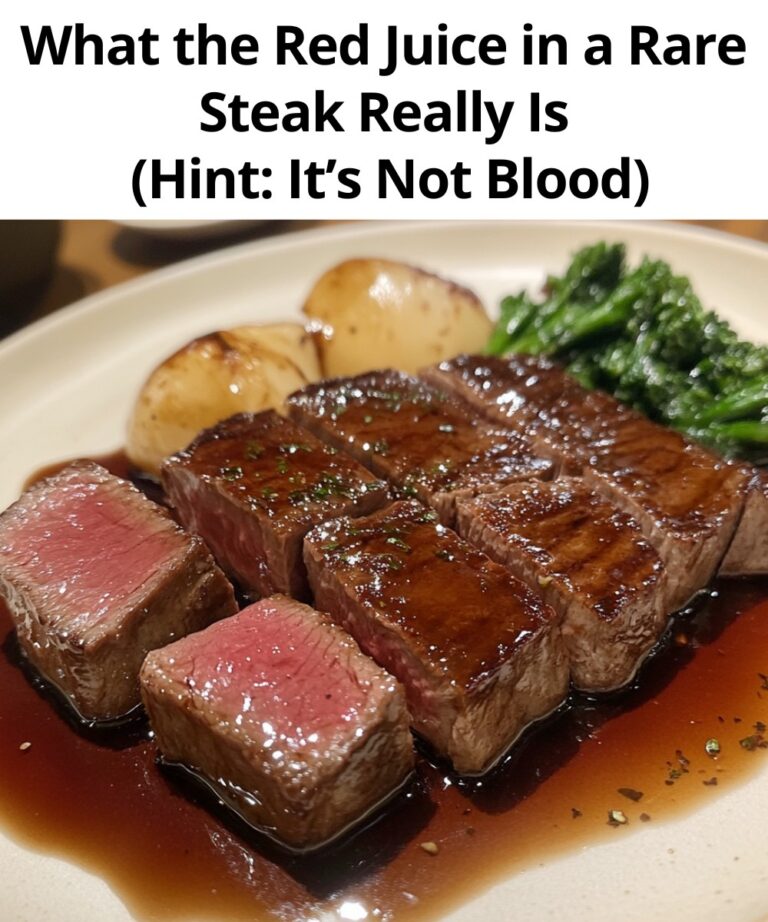ADVERTISEMENT
For many steak lovers, the sight of a juicy, rare steak is mouthwatering. But for some, that same sight can be off-putting due to a common misconception. The red liquid that oozes out of a rare or medium-rare steak is often mistaken for blood, leading people to assume the steak is undercooked or unsafe to eat. However, this couldn’t be further from the truth. In reality, that red juice has nothing to do with blood—let’s dive into what it really is and why you shouldn’t shy away from it.
What Is the Red Juice in a Rare Steak?
The red juice that you see in a rare steak is actually a mixture of water and a protein called myoglobin, not blood. Myoglobin is present in the muscle tissue of the meat and is responsible for the reddish color of raw and undercooked meat. When the meat is heated during cooking, myoglobin releases water and pigment, which gives the meat its juiciness and appetizing color.
Understanding the Basics of Meat Composition
Meat is primarily composed of three elements: water, protein, and fat. When you cook a steak, these components react differently depending on the temperature and cooking method. Since steak is muscle tissue, it contains a variety of proteins, including myoglobin, which plays a significant role in determining the color and appearance of the meat.
What Is Myoglobin and Why Is It Red?
Myoglobin is a protein found in the muscle fibers of animals, and its primary role is to store oxygen for use during muscle activity. It’s similar to hemoglobin, the protein that carries oxygen in the bloodstream, but myoglobin is specifically found in muscles. This protein contains iron, which binds to oxygen, giving myoglobin its reddish color.
The amount of myoglobin present in meat depends on factors like the animal’s species, age, and activity level. For example, red meats like beef and lamb contain more myoglobin compared to white meats like chicken, which is why red meats tend to have a darker, richer color.
Debunking the Myth: Why It’s Not Blood
Contrary to popular belief, the liquid in your steak is not blood. During the slaughtering process, most of the animal’s blood is drained out. What remains in the meat is primarily water (about 75% of meat’s weight) along with proteins like myoglobin. When you see that red juice pooling on your plate, you’re actually looking at a mixture of water and myoglobin released from the meat’s cells during cooking.
Why the Misconception?
This misconception likely stems from the fact that both blood and myoglobin are red due to their iron content. However, while blood carries oxygen throughout the body via hemoglobin, myoglobin only stores oxygen in muscle tissue. This is why the ‘red juice’ in a rare steak has no connection to blood.
What Happens to Myoglobin During Cooking?
ADVERTISEMENT
